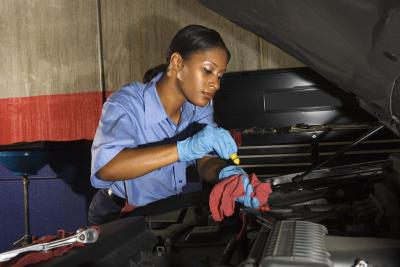
The radiator helps keep your engine cool while you drive. More efficient than copper or brass radiators, an aluminum radiator has wider tubes that increase its ability to cool the engine. The lightweight features and phenomenal cooling capabilities of aluminum radiators make them a prime choice for use in racecars and sports vehicles. Aluminum radiators require special care to keep them in top working order.
Regularly bring your car to a mechanic or service garage. The entire cooling system, including the aluminum radiator, require maintenance at least every two years or 30,000 miles, whichever comes first.
Only use an anti-freeze specifically designed for aluminum radiators. An organic-acid technology (OAT) anti-freeze product, which is different from conventional anti-freeze, will help to protect the aluminum radiator and system components.
Maintain proper coolant conditions. Continuously running your vehicle with low-coolant levels can eventually damage the aluminum radiator and cooling system. You may end up with a clogged system or an overheating problem if coolant levels are not maintained.
Check the coolant conditions inside the aluminum radiator. When you check your fluid levels, also check the pH of the coolant inside the radiator. Use a pH test strip to measure the acidity or alkalinity of the fluid. A reading between 7.7 and 9.3 falls into normal guideline. Give your mechanic a call if the readings fall outside the normal range.
Run an electrolysis check using a multimeter. This test will require you to set the multimeter to DC volts, while connecting the negative end of the multimeter to the negative battery post. Dip the positive end of the multimeter into the coolant. If you get a reading higher than .01, you may want to call your mechanic. Electrolysis can cause corrosion the radiator's interior.